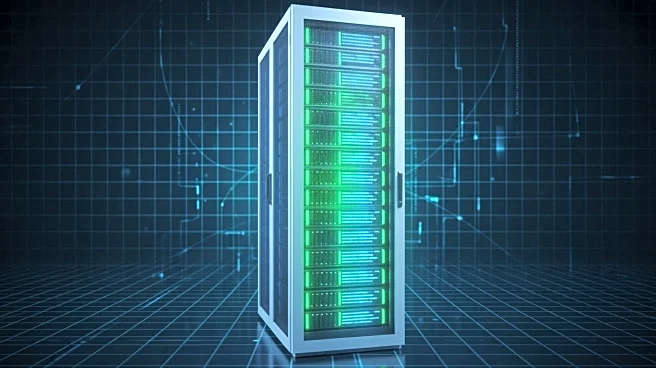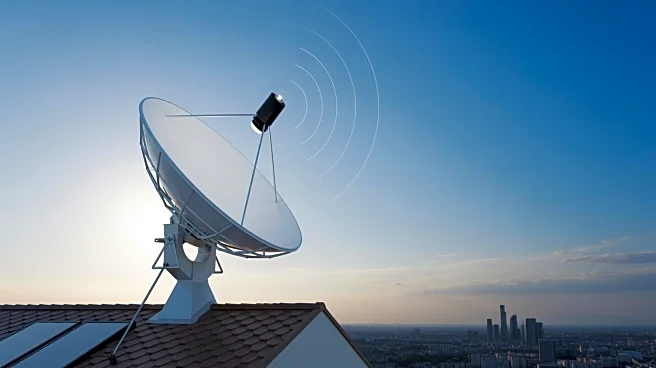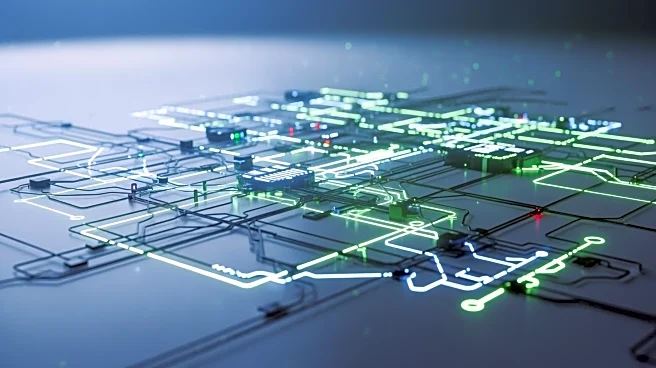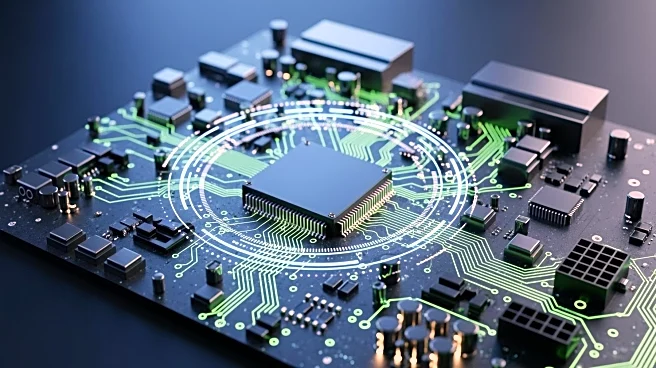What's Happening?
The rapid expansion of artificial intelligence (AI) is significantly increasing the energy consumption of data centers in the United States. A decade ago, large data centers typically required around 30 megawatts (MW) of power. Today, new hyperscale facilities
demand between 100 to 200 MW, with some designed to consume up to several gigawatts (GW). This surge in energy demand is creating challenges for the U.S. energy grid, as utilities, regulators, and policymakers strive to meet the needs of AI-driven data centers. According to the Electric Power Research Institute, the electricity demand from U.S. data centers is projected to grow annually by 3.7% to 15% through 2030. The uncertainty surrounding the energy demand is further complicated by the development of next-generation AI chips, which may either increase or decrease overall energy consumption.
Why It's Important?
The growing energy needs of AI data centers have significant implications for the U.S. energy infrastructure. As these facilities consume more power, there is a pressing need for grid upgrades, including advanced transmission conductors and grid-enhancing technologies. The expansion of energy markets and the strategic siting of data centers in areas with robust power infrastructure are crucial to balancing supply and demand. Additionally, the fair distribution of costs associated with these upgrades is essential to prevent local communities from bearing the financial burden. The development of cleaner and more resilient backup power options, such as natural gas plants and hybrid renewable systems, is also vital to ensure reliability and sustainability.
What's Next?
To address the challenges posed by the increasing energy demand of AI data centers, several steps are being taken. Reforms in the interconnection process are underway to streamline the integration of new loads onto the grid. The Federal Energy Regulatory Commission's Order 2023 is prompting transmission providers to adopt initiatives that accelerate study timelines and improve load forecasting. Additionally, securing the grid against cyber threats and espionage is becoming a priority, with federal programs expanding to enhance cybersecurity measures. The U.S. must also invest in workforce development to address shortages in skilled trades and engineering, ensuring the grid's readiness for future demands.
Beyond the Headlines
The rise in energy consumption by AI data centers highlights broader issues related to national security and global competition. As AI becomes integral to critical sectors like defense and finance, securing both physical and digital infrastructure is paramount. The U.S. faces competition from countries like China, which is rapidly scaling its AI and grid infrastructure. To maintain its technological leadership, the U.S. must continue investing in research and development, strengthen domestic supply chains, and foster public-private partnerships. These efforts are essential to realizing the full potential of AI while ensuring a secure and resilient energy grid.















